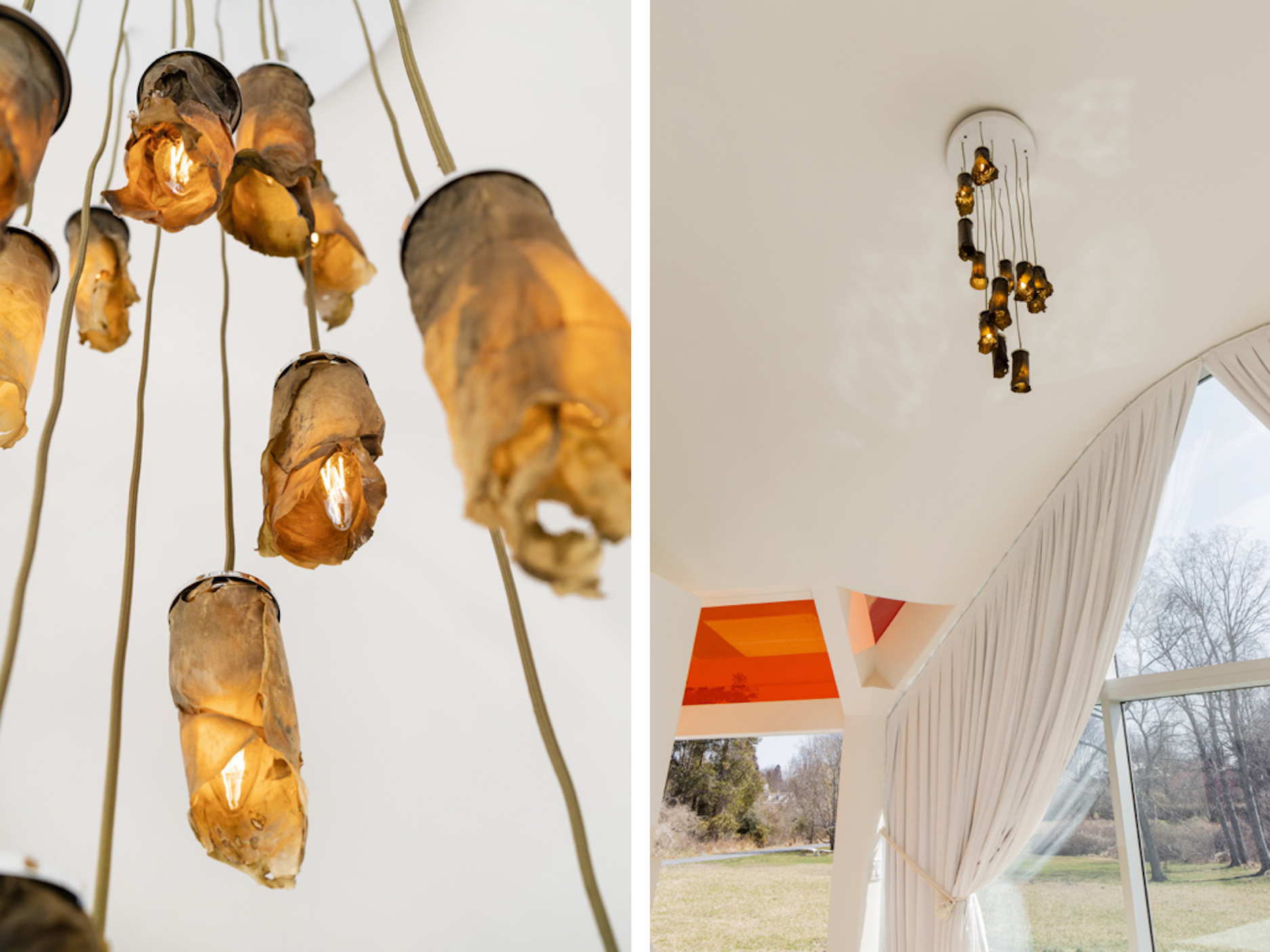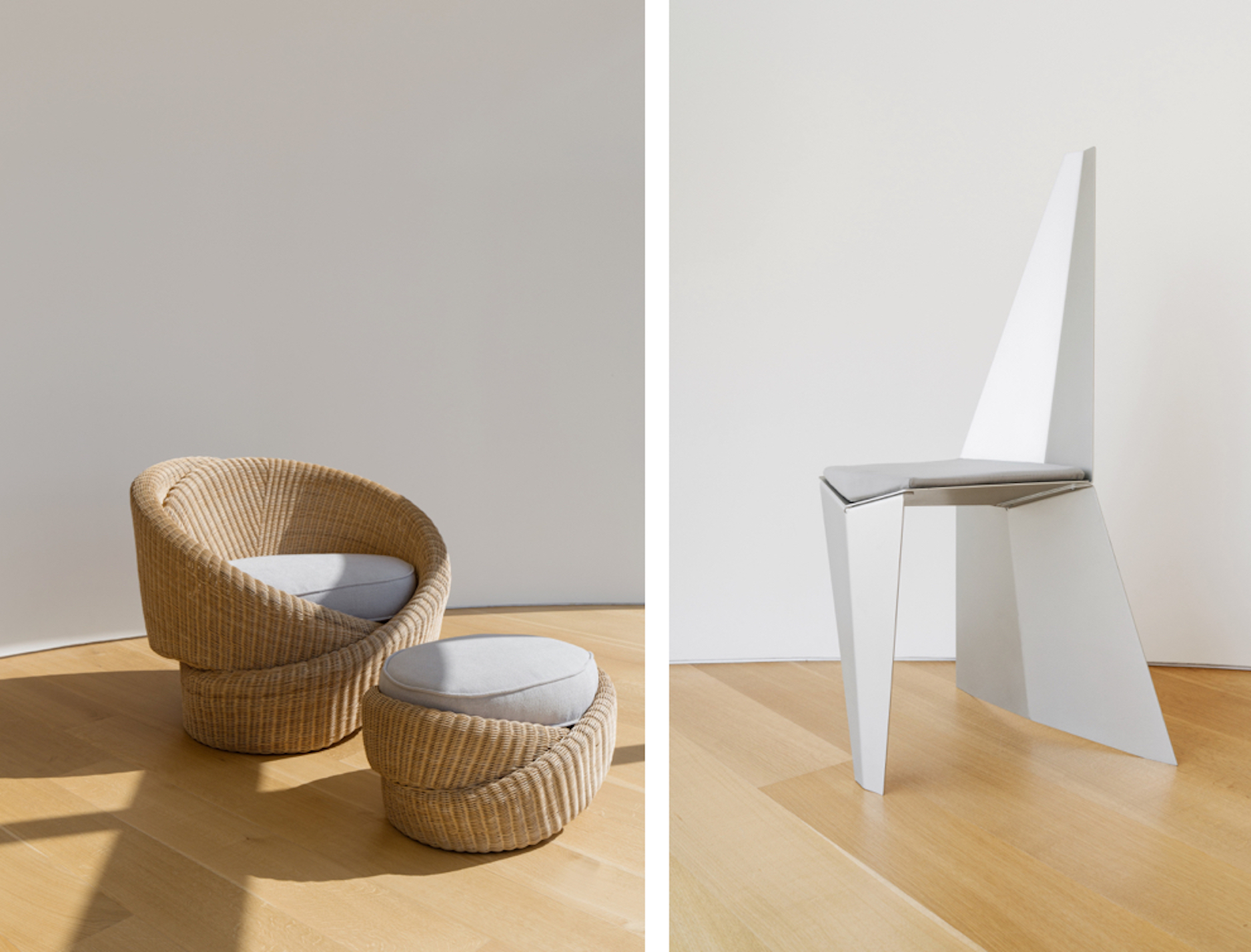nea studio—the cross-disciplinary design firm founded by Nina Edwards Anker—doesn’t seem to shy away from much of anything. There’s arresting furniture that charms and surprises. There’s lighting that tips over into museum-worthy art. There’s architecture that transcends its materials and our expectations. All of it is executed through a stunning, company-wide appreciation for 3D modeling and 3D. All of it is conceived and crafted with a priority on sustainability and a certain fearlessness.
But that’s not to say it’s all avant-garde at nea. It’s a highly adaptable practice with more than a few simple, comfortable, relaxed interiors under its belt. Creating a firm that balances all this from the ground up was no mean feat, but, as Edwards Anker tells us below, the path to creating this very special firm was a natural process for her. Read on.
nea studio is a member of The List, the destination for all things Surface-approved. Want to join The List? Contact our team to find out how to apply.
APPLY
I’m wondering if your upbringing influenced the way you design, experience design, or think about design?
I was brought up in Manhattan with my mother, an interior designer who worked at SOM, the only woman to graduate from her class at Parsons. An aesthetic person, she trained my eye at a young age, and influenced the way I think about design. I grew up with her taking us to museums, which shaped the way I experience and process art and design. She also influenced the way I design, as I grew up with her repeating the modernist mottos, “less is more,” and “God is in the details.”
Tell me a little more about life before nea studio.
Before nea studio I asked myself a lot of questions, experienced setbacks and explored many avenues. At age 16, I wanted to be an artist but decided to major in art history for my undergraduate studies while working in museums, auction houses and galleries during the summers. I became more interested in architecture than art because it touched on the wider realm of society and culture in a less subjective way. While in London, I was writing a postgraduate paper about an architect and a friend asked, “instead of writing about an architect, why don’t you become one?” I never dreamed of being an architect because I wasn’t confident in my math skills. Then I found out that there was no math needed at the Architectural Association, so I applied and was miraculously accepted on the basis of my art portfolio. It was there that I found my passion.
…And from there?
After grad school I worked in architecture firms for two years in Manhattan and two years in Oslo before establishing nea studio in 2006. It was perfect timing because an architect colleague who was overly busy gave me all her small jobs. The architecture jobs sustained my furniture line, which I had been modeling and sketching after-hours for several years prior. I then took a break from my business to write a PhD in architecture (a paid research job at the Oslo School of Architecture and Design) in order to better understand the meaning behind my designs. My work today is a progression of my dissertation research on solar design and affect theory.
What aspect of nea studio are you most proud of?
I’m most proud of the fact that nea studio, through continuous research, development, and collaboration, has managed to create designs that people actually enjoy. The story of nea studio is born from the desire to connect people with nature, as well as move the needle in the world of sustainable design and architecture. Within our focus, solar design, we are especially interested in material research, especially of emerging technological and organic materials. We explore the theme of effect and affect, where effect serves affect, not the other way around. In other words, the effective environmental technology or principle served as a backdrop for the experience of the design. We achieve this aim by several means: underlining solar rhythms through light and shadow, reflectivity and translucency, contrasting the organic with the artificial, connecting indoors and outdoors, and creating multi-sensual experience.
Our Cocoon House embodies these ideas, where the environmental technologies and principles serve the experience of being in the house. They’re incorporated in the design from its inception rather than as an afterthought. The Solar Chandelier incorporates similar principles, contributing to nea studio’s concept of the off-the-grid living room, connecting indoors and outdoors.
New projects we should know about?
We’re currently developing an outdoor public solar seating/lighting piece and indoor solar lighting that we’re launching in a couple weeks.
What advice do you have for young professionals in the field?
My advice for young architects and designers is above all to enjoy your creativity, develop positive habits like taking time for yourself to sketch every day. Second, develop strong professional skills that will carry you through your career. Third, nurture relations with other professionals who share the same interests because collaboration is fun and key in being able to move the needle, especially in the world of sustainable design.
VIEW ON THE LIST




